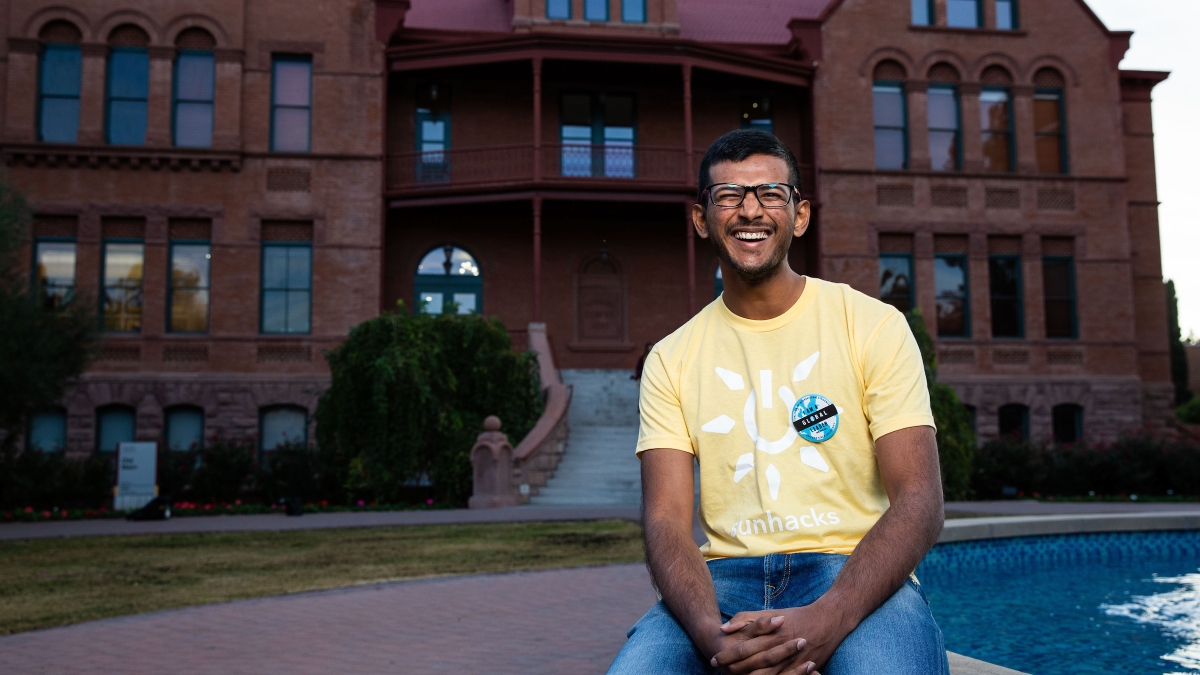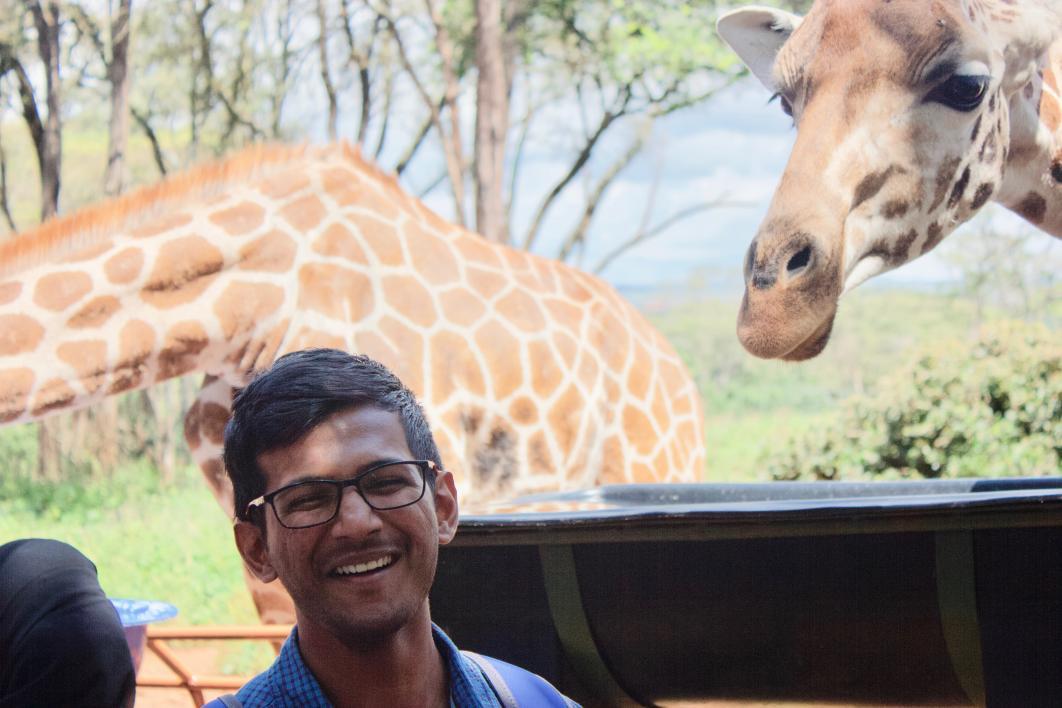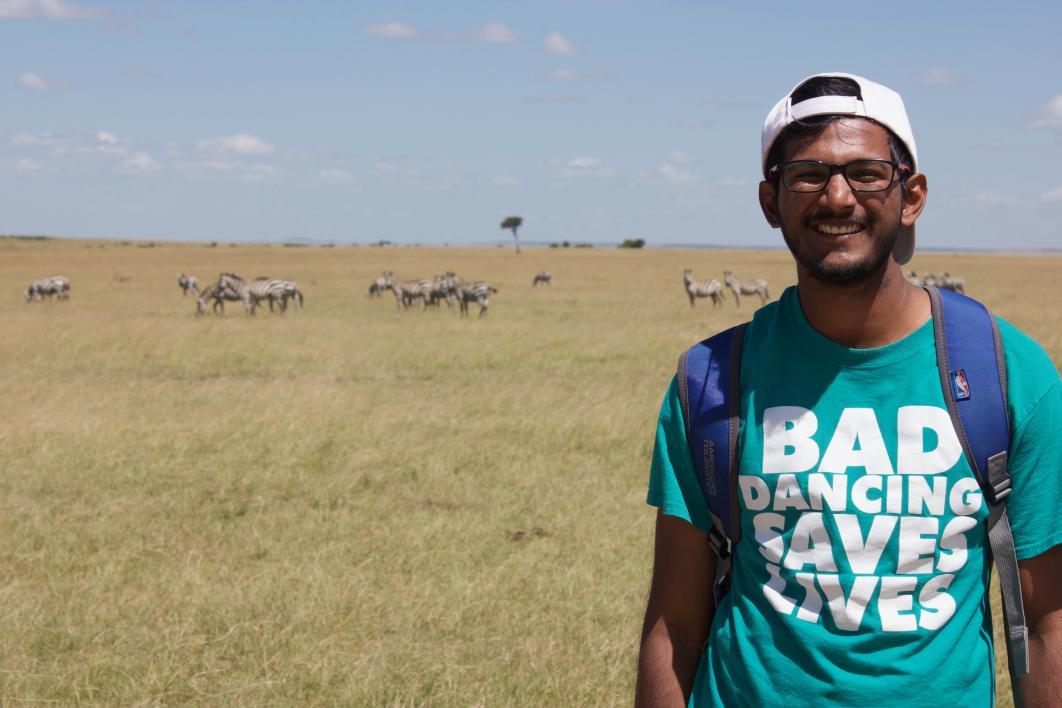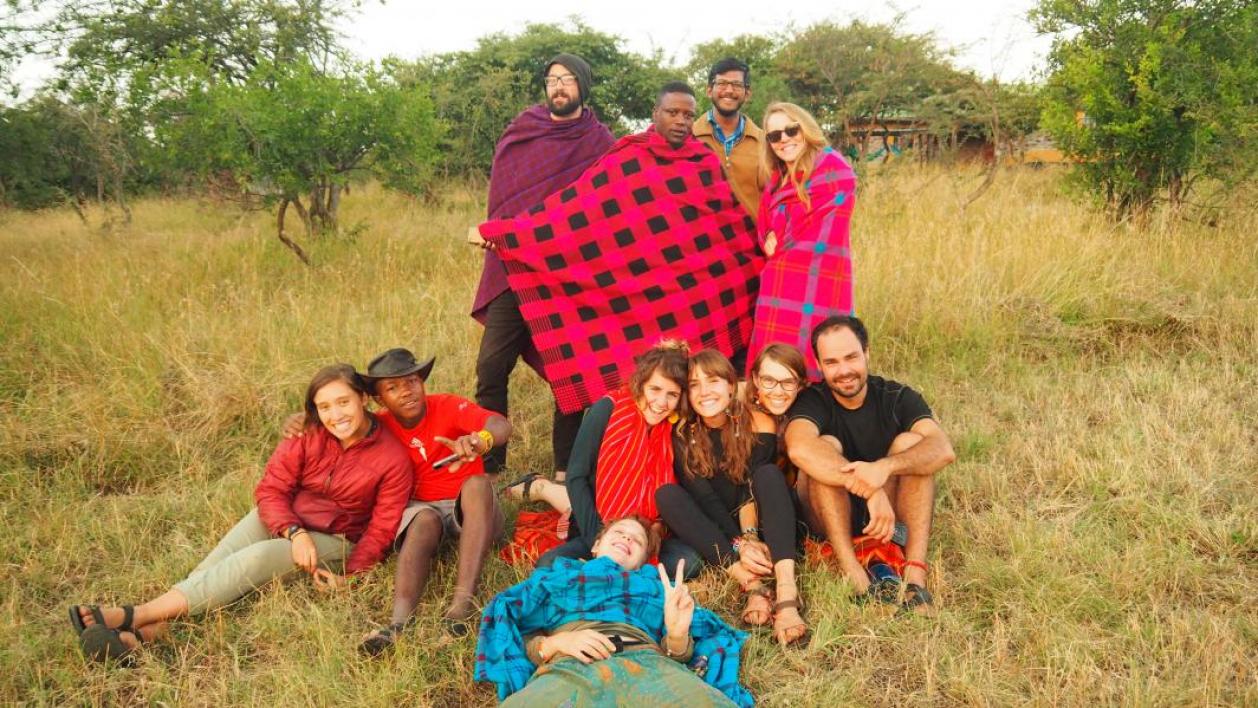Editor’s note: This is part of a series of profiles for fall 2018 commencement. Read about more graduates.
When Arizona State University student Siddhu Immadisetty woke up every morning last summer in the Masai Mara preserve in southwestern Kenya, it was to the sound of hyenas whooping.
Immadisetty spent two months living in a tent in the remote area, working to improve an education center’s solar grid.
“It was a very unique experience that every person in ASU should be doing to get out of their comfort zone and get used to people and cultures they don’t know and do something good for the society,” he said.
Now, Immadisetty is graduating from ASU with a professional science master’s degree in solar energy engineering and commercialization. He plans to devote himself to bringing light to the developing world.
Even though Immadisetty grew up in Hyderabad, India — a city of almost 7 million — the setting in Africa was familiar. It reminded him of trips to visit his grandmother in a rural village back home.
“I have a sense of how a village and all those situations and conditions could be,” he said. “I was expecting how things would be, so it made my life easier. I told my friends it was just like a small village in India.”
Immadisetty went to Kenya for a U.S. Agency for International Development project. ASU pairs with the federal agency through the Global Development Research program offered in the School of Sustainability to match grad students with projects across the globe.
“It was an interesting project,” he said. “I never imagined I would be going to Kenya.”
After graduation, he plans on getting a full-time job to gain experience (and pay off his student loans). “My future plans are to go back to developing countries and implement some of the knowledge I have gained,” he said.
Question: Why did you choose ASU?
Answer: Before I came to ASU … I realized I should be doing something besides my studies where I can get culture and international exposure. I went to ASU and found my program. I looked at some of the information — ‘Oh, 135 countries at ASU.’ It’s very diverse, multicultural and unique. Having about 13,000 international students, it’s really a wonder. … This is a university where I can be a global citizen, so I applied for it and got into the program. I’m very happy I’m in the program. We went to San Diego, to install (photovoltaic) modules on a low-income Indian reservation community. We literally climbed the roof and drilled and placed the rails and installed the modules on them, all by ourselves. I never imagined my program has got that unique opportunity. I was really proud I was enrolled in this program where I got to do all kinds of different things.
Q: What’s something you learned while at ASU — in the classroom or otherwise — that surprised you or changed your perspective?
A: When I came here last August, everyone on the road used to wave at me and say, ‘Hi, hello.’ It’s really good. … University is very different; people want to keep to themselves, but I haven’t seen something like that here at ASU. People are very friendly. The good thing I like here is everyone is willing to offer their help to whatever extent they can. I have learned the helping nature very much. I’m used to that only after coming here. I’m also now very ready to offer my help and am helping all my friends and others here. Helping nature is the main thing I have learned here.
Q: Which professor taught you the most important lesson while at ASU?
A: As part of this Global Development Research Program, we also need to take a supplemental course called International Development Theory and Practices. It’s taught by Dr. Milan Shrestha of the School of Sustainability. He’s a tough guy. He’s a tough professor, but at the same time I go to learn a lot from him because I was falling behind in grades and assignments. I had some interactions with him and he said he had gone through the same phase, assuring me that it’s part of student life. We should just be keeping up with the pressure and the work and never be afraid of what grades we are getting; what we are learning is more important. I really think the conversation we had was very useful to me to progress in my life.
Q: What’s the best piece of advice you’d give to those still in school?
A: ASU is very huge; it’s a big campus, so many students here, and so many resources available, events, programs, whatnot, everything is happening now, even as we are speaking. At the same time you can’t be involved in all the things. I would suggest to the students take the most from ASU, as much as you can. It’s the important thing. … The more you learn, the more resources you have here.
Q: What was your favorite spot on campus, whether for studying, meeting friends or just thinking about life?
A: It’s very hard, because ASU Tempe campus itself is very beautiful and elegant, having different unique structures. Every structure has its own good thing, like the (Memorial Union) where you have the palm trees and the lights in the night. I really feel it’s an excellent place. It’s something kind of a movie feeling for me, like a Hollywood movie. … It’s always very lively, with students coming and going and eating.
Q: If someone gave you $40 million to solve one problem on our planet, what would you tackle?
A: As a child I always dreamt of building an education institution myself, because I believe education has changed me a lot. There are so many people in the world lacking education, lacking other facilities, but education is more powerful than other things. Once you are educated, your brain starts to think for the solutions. Collectively we all work together and we will keep progressing. It’s the basic tool that will explore different things, so I would invest in education.
Top photo: Solar energy engineering and commercialization graduate student Siddhu Immadisetty poses for a portrait on the ASU Tempe campus on Nov. 19. Photo by Deanna Dent/ASU Now
More Science and technology

4 ASU researchers named senior members of the National Academy of Inventors
The National Academy of Inventors recently named four Arizona State University researchers as senior members to the prestigious organization.Professor Qiang Chen and associate professors Matthew…

Transforming Arizona’s highways for a smoother drive
Imagine you’re driving down a smooth stretch of road. Your tires have firm traction. There are no potholes you need to swerve to avoid. Your suspension feels responsive. You’re relaxed and focused on…

The Sun Devil who revolutionized kitty litter
If you have a cat, there’s a good chance you’re benefiting from the work of an Arizona State University alumna. In honor of Women's History Month, we're sharing her story.A pioneering chemist…





